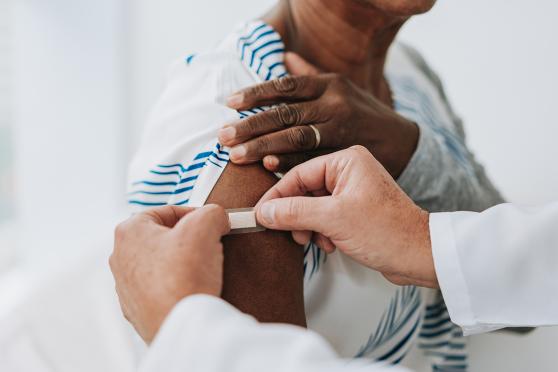4 things to know about male incontinence
Sprung a leak? Here’s what’s happening—and how to handle it.

Accidents happen, but that doesn’t make them easy to accept. Guys, does this sound about right? We thought so.
If you’ve been experiencing sudden urges to go or untimely leaks and dribbles, you have a medical condition called urinary incontinence (UI)—and you’re in good company. Up to 30 percent of men are dealing with an overactive bladder (one form of UI), according to the American Urological Association. Some studies put the number even higher.
All the more reason to accept reality and take action. Start by learning more about UI and what treatment options can bring you some relief. Here are four things every guy needs to know:
#1: You’re in good company
As many as one in three older men have UI, according to a report in the journal Urology. Incontinence problems, small or large, can feel embarrassing or seem inevitable and untreatable.
Perhaps that’s why just one in five men living with this health condition ask their doctor for help. It may also explain why, in one UT Southwestern Medical Center study of 572 men considering surgery for incontinence, one-third said they had waited five years before consulting a doctor for treatment.
Another reason for the silence: Your doctor may simply not ask you about it, especially if you made the appointment for a different health issue, says Brian Helfand, M.D., a research assistant professor in the Department of Urology at Northwestern University’s Feinberg School of Medicine.
“Our research has demonstrated a relatively high rate of incontinence among men—greater than 40 percent in some studies,” he says. Yet, “the most commonly used assessment tools don’t prompt doctors to ask men about any problems they might be having with their bladder or bathroom habits.”
“We rely on patients to bring this to our attention,” says Helfand.
If you’re bothered by UI symptoms, end the stalemate and call your doctor.
#2: Finding the root cause helps inform treatment
Several different scenarios can bring on male urinary incontinence. Once you describe your symptoms—and when they occur—to your doctor, they can start to figure out the root cause.
Often, UI is the result of:
- An enlarged prostate, which may obstruct your bladder so it cannot hold as much urine but is also more difficult to empty fully. (This accounts for two-thirds of overactive bladder problems in men, according to the National Association for Continence.)
- Prostate cancer
- Age-related changes in nerves that control your bladder and its signals to your brain
- Damage to the urethral sphincter, which is the muscle that holds urine in your bladder, during prostate-cancer surgery. (For most men, incontinence after the procedure clears up in one to two years, but 5 to 10 percent may have ongoing, bothersome leaks.)
Other health conditions that can raise your risk for incontinence include sleep apnea, diabetes, constipation, depression, a history of urinary tract infections, and neurological problems like Parkinson’s disease, multiple sclerosis, and stroke.
3. Leaking isn’t the only symptom of UI
Like many medical conditions, UI comes in many different forms and with varying symptoms.
Overactive bladder occurs when your brain tells your bladder to empty, even if it is not full, or when bladder muscles suddenly contract to pass urine before your bladder is full. These urges occur both day and night. Urge incontinence is the leakage of urine, whether a few drops or a large amount, during these contractions.
Stress incontinence involves leaks when you exert yourself—like running or lifting something, or when you sneeze, cough, or laugh. Mixed incontinence is when you experience symptoms of both stress and urge incontinence.
Overflow incontinence is when the bladder never completely empties, and a constant dribble of urine occurs. This condition is much more common in men and normally related to prostate problems.
4. You have options to find relief
Depending on your symptoms, your doctor may recommend medication or even surgery. But most likely they’ll also suggest lifestyle changes, including:
- Cutting back on caffeine and alcohol, which often trigger urges
- Not drinking large quantities of fluids at one time; instead opting for smaller sips at regular intervals
- Bladder training, which involves scheduled bathroom trips to help you safely “hold it” longer
- Kegel exercises to strengthen your pelvic muscles, which help hold urine in the bladder
- Regular daily exercise, which helps keep your weight in line and takes some pressure off your bladder


